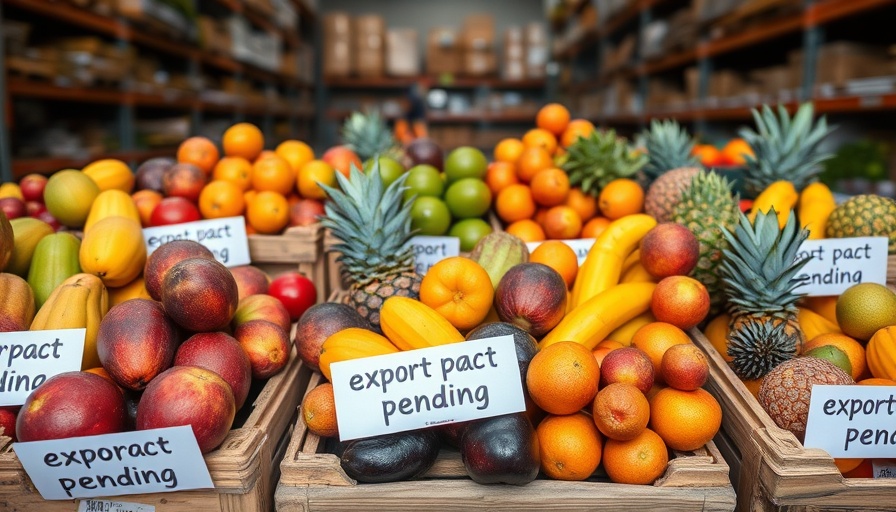
Understanding the New Tariff Amendments: What You Need to Know
As of May 2, 2025, amendments concerning tariffs as per the Customs and Excise Act of 1964 have been officially published in Government Gazette 52576. These changes, mentioned in notices R6164, R6165, and R6166, are relevant to professionals navigating the complexities of customs regulations in South Africa. The adjustments in tariffs are crucial, impacting both import and export activities across various industries.
The Importance of Tariff Regulations in Global Commerce
Tariff regulations serve as a critical mechanism for government control over the inflow and outflow of goods, which is especially significant in an increasingly interconnected global economy. As countries negotiate trade agreements and work to protect local businesses, these amendments can facilitate or hinder market access. Understanding these nuances allows professionals to adapt their strategies accordingly, ensuring compliance while optimizing trade practices.
Pitfalls in Compliance: Avoiding Common Mistakes
Compliance with tariff amendments is not merely a bureaucratic requirement; it is essential for minimizing financial liabilities. Professionals should be vigilant about the specifics of these amendments—including the classifications of goods and relevant duties. Incorrectly interpreting these regulations can lead to costly penalties and operational disruptions. Thus, precise knowledge of the current legal framework is imperative for safeguarding business interests.
Financial Implications of the Tariff Changes
Tariff modifications directly influence the cost structure of goods. As new rates take effect, businesses must reassess their pricing strategies and profit margins. The economic landscape is likely to be affected by these changes, particularly for sectors that heavily depend on international trade. With fluctuations in tariff rates, strategic financial planning becomes increasingly necessary to maintain competitive advantages.
Anticipating Future Amendments: Be Prepared
Staying ahead in the realm of customs and tariffs requires a proactive approach. As international relations evolve, new amendments will emerge, influencing trade flows and tariff regulations. Professionals should establish robust monitoring systems that keep them warned of any impending changes in legal frameworks or tariffs. Investing time in continuous education about tariff regulations will provide a significant competitive edge.
The Intersection of Political Dynamics and Trade Policy
Trade policy and tariff amendments often reflect broader political climates and decisions made in parliament. For professionals in the field, understanding the political motivations behind these changes can provide valuable insight into potential future amendments. Engaging in discourse surrounding policy can empower businesses to advocate for sensible regulations that favor free trade.
Conclusion: Engage with the Changes
The recent amendments in tariff regulations necessitate an informed response from professionals across various sectors. By staying updated on these changes, understanding their implications, and preparing for future developments, businesses can navigate the complexities of international trade effectively. Encourage direct engagement with legal counsel when interpreting these amendments to gain tailored advice and avoid pitfalls.
 Add Row
Add Row  Add
Add 




Write A Comment